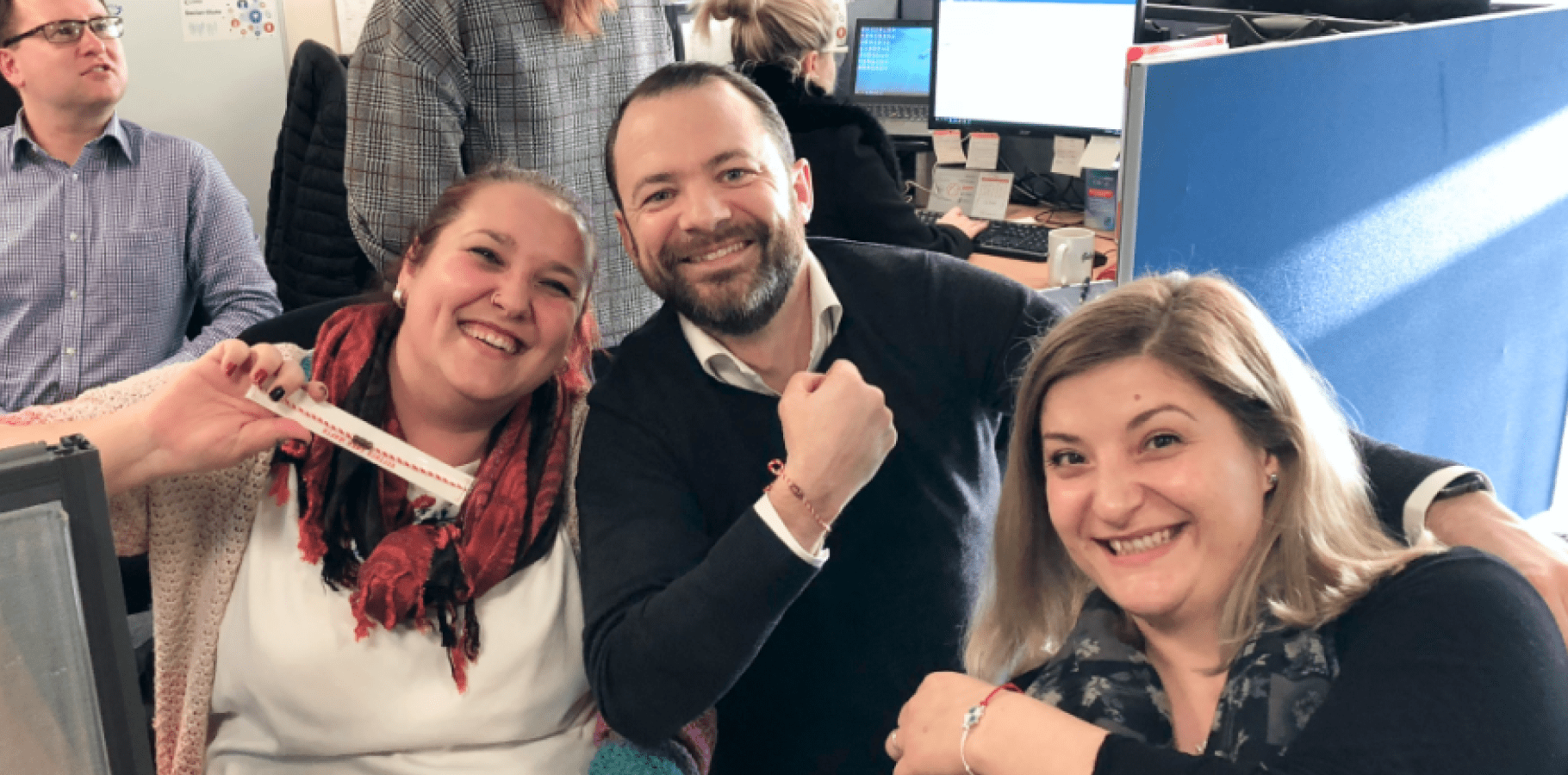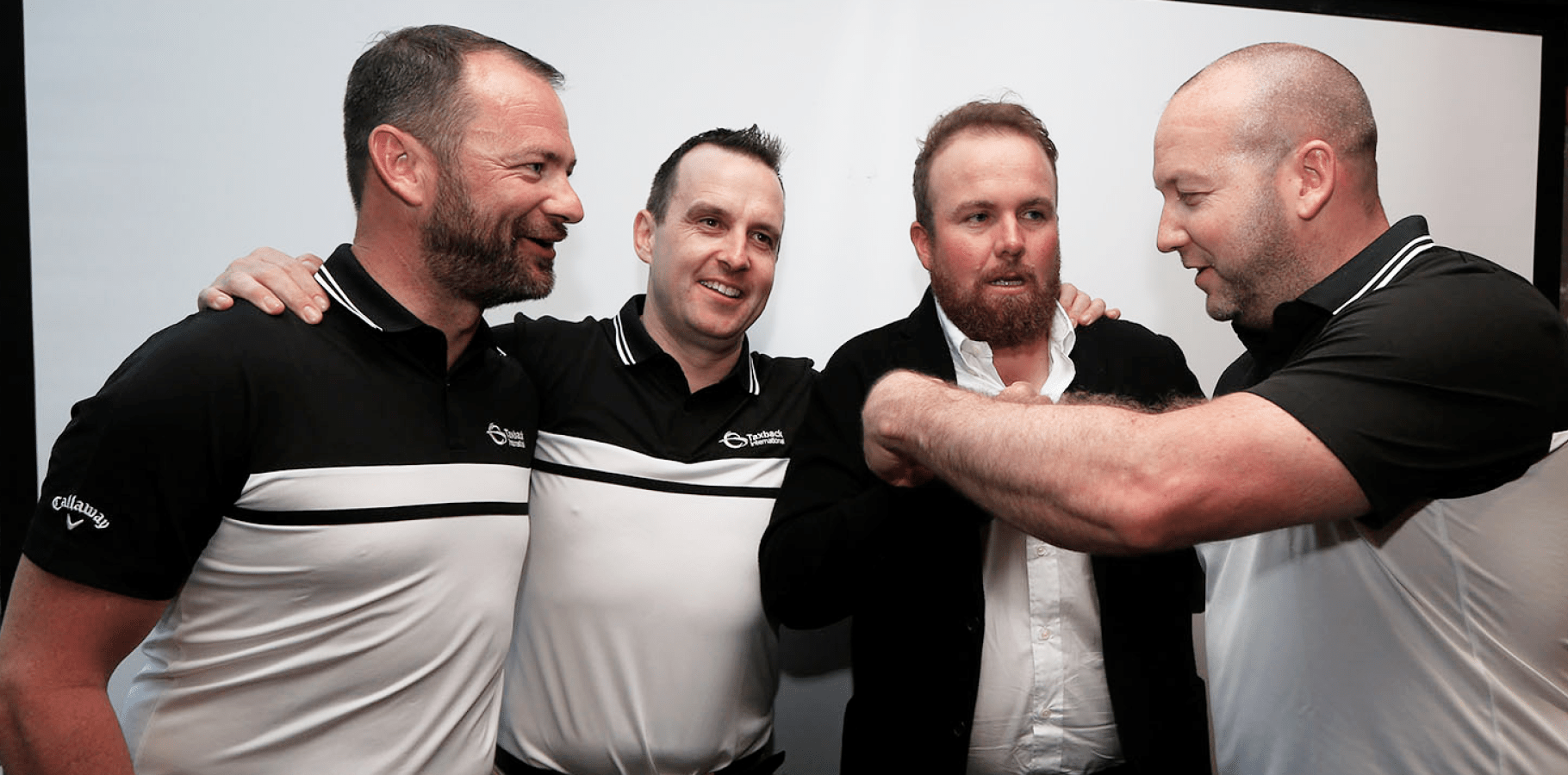When Joe Healy, Chief Commercial Officer for TaxBack International, started working in the industry over 15 years ago, companies that wanted to audit their spending to figure out how they could reclaim the VAT had to do a deep dive into storage facilities, open banker boxes and go through all the expense reports by hand, just to find that some of those receipts might not even be useful as they were damaged. Today, technology allows for VAT Reclaim to be done much more smoothly and, when done correctly, it can help organisations save money.
But for that to happen, Joe says, it all starts with awareness. Employees should be made aware of how much the company can save with VAT Reclaim at the end of the year, and how they can contribute to that amount by paying attention to small details such as the name and address stated on a Hotel invoice.
During this interview, Joe shared some of the knowledge and experience he gathered over the years he’s worked in the VAT reclaim field. We delved into the essence of VAT, the global reach of tax and its importance in international trade, and even had the time to discuss the key shifts technology has brought over the last few years with the rise of expense management software.
Let's start with the basics. What is VAT?
Value Added Tax is an indirect tax, levied on the supplies of goods and services. It’s charged at every stage of the production cycle and, ultimately the cost is borne by the end consumer. So, when we’re talking about Travel & Expense, it’s borne by the corporation, because as we travel for our businesses and incur expenses — such as hotels, car hires, meals, client entertainment, conferences, etc. —, it’s the business that pays for all of that and, consequently, it’s the business that incurs the VAT.
And VAT is all over the European Union and EMEA in general. But also countries such as Saudi Arabia have their own equivalent of VAT, albeit it’s very small, about 5 or 6%, but these numbers are always changing, especially when talking about VAT reclaim. Japan, for example, is going to change their rules about VAT reclaim in October, and there are more and more countries where VAT recovery is possible.
The advent of expense management systems was an absolute game changer for VAT reclaim.

Joe Healy
CCO at TaxBack International
And why is VAT reclaimable?
Essentially, it’s about reciprocity rules. Business rules permit that reclaim, and this encourages international trade. It was enacted by the European Union in an attempt to create a single market. So what that meant was that if I was doing business in Ireland and I wanted to do it in Portugal, given that we’re both in the EU, I should have the ability to trade in Portugal as I do in Ireland without any VAT barrier. So the 8th EU directive was developed to allow that kind of cross-border VAT reclaim.
Then, in order for the EU to become an attractive destination for non-EU-based countries to do business, the 13th directive reclaim mechanism was created, even though various reciprocity rules apply. At the moment, there are quite a few non-EU-territories that are able to refund VAT, such as Australia, Japan, Canada and South Korea, but the list is expanding and, as I mention, the rules are constantly changing.
Have you worked in VAT reclaim for long? What changed during that time?
I’ve been in the commercial business for over 25 years, 15 of them with TaxBack International, and I’ve seen a lot of changes. At first, nobody really focused on Travel&Expense. There was a huge amount of reclaim in accounts payable and supplier invoices. The industry was doing really well with that type of VAT Reclaim.
However, in 2010, the European Union introduced the reverse charge mechanism. This essentially said that if I’m an Irish business and I’m buying, uh, something from Portugal and I give the Portuguese supplier my VAT number, that supplier knows that they’re shipping the goods or services to Ireland. And because we’re both in the European Union, no VAT will be charged on that invoice.
That, essentially, eliminated about 80% of accounts payable suppliers’ VAT invoices. There are still some intricacies around the place of supply and that means VAT is still charged in some instances but, for the most part, it all disappeared after 2010.

How did you work to keep up with the market changes after that?
At that point in time, we realised that a lot of expense management systems were starting to be developed. There was still a huge paper-based area at that point in time, and we understood that if we could develop some technology it would make it easier to identify the expense reports that needed to be audited.
And, in those days, an audit meant sending a team into an archive and storage facility, opening up banker boxes and expense reports to identify which had VAT charged. So we developed a technology that could analyse corporate card data and expense management system data and program it with all the rules and reciprocity rates for VAT recovery worldwide.
With this technology, we could easily get in and offsite much faster because we knew exactly what we were looking for. We could also determine how much the customer could save up on tax, and they valued that, especially given that we are always up to date with current regulations and are able to adjust our tech to it, something that, at the time, most people thought impossible to achieve. Now they can budget for the amount they will spend and get reimbursed in tax at the beginning of each year, and that totally changed the game.
Why should VAT reclaim be something companies worry about?
As our American colleagues would say: you need to know the size of the prize because you’re going to invest some time and energy in this. You need to be able to determine if it’s worth your time and energy and what the opportunity looks like.
From our perspective, you can look at it from two different approaches. On the one hand, you can look at a company’s global spending, excluding international airfare, and as a rule of thumb, take 10% out of that figure. And this is just a high-level estimate. If you look at our customer base, consider their total spend per annum and take 10% of that figure, you’ve got a pretty big number.
Another method we can use to determine the value of VAT reclaim is to break it down into an actual trip basis. Let’s say a customer has a week-long business trip to London and you look at hotels that run at around 300£ a night. For five nights, that’s about 1500£. Add meals to this (around 500£), and other expenses and you’re looking at a total cost of about 3000£ for a week. The VAT on that is going to be 20%, so doing the easy math you can see that it is possible to save around the 500£ mark on that one trip. If you have ten of these trips, you’re saving upwards of 5000£ in a year.
If you don’t have a robust process to identify the type of VAT you’re paying and what amount of that is reclaimable, you’re basically leaving money on the table.

Joe Healy
CCO at TaxBack International
And in this current economy, everything counts...
If you look at the environment we’re operating at the moment, where we seem to be on the verge of a recession ever since we came out of the pandemic, we have a crippling inflation all over the globe, so yes, everything counts.
This is affecting both consumers and corporations, and corporations are all about the bottom line right now. One of the quickest and most efficient ways to help the bottom line is VAT reclaim on travel and expense and account for payable invoices as well. Because, essentially, if you don’t have a robust process to identify the type of VAT you’re paying and what amount of that is reclaimable, you’re basically leaving money on the table. And in this current environment that’s a really bad idea.
Could this actually help companies achieve profitability and break even, something that most are focused on at the moment?
Absolutely, I couldn’t agree more. And if you look at the travel industry in general, it’s all about looking at what you can save. If you travel with this airline, how much can I save? Should I have a preferred hotel supplier? Et cetera.
And if you can just turn around and find a way to take about 20% of the cost of that trip straight away, and you find a solution that can do this without you having to worry about anything else, that’s really powerful.
What would you say are the most common pitfalls in VAT Reclaim?
After 15 years of working in this business, I suppose I could say that the ineffectual communication of the concept of VAT reclaim to the traveller is probably the single biggest problem. It’s why we at TaxBack International invest a huge amount of time and effort in our continuous improvement program.
When we onboard a customer, we look to provide a lot of educational collateral for them to share with their travellers, because ultimately, there are a few basic requirements when it comes to recovering VAT on travel expenses.
The predominant one, of course, is that you always have to ask for a VAT receipt if you’re at a hotel, restaurant or bar. And this is just the name and address of the supplier, a brief description of what you’re buying and the gross; net and VAT amount.
Then when it comes to hotels and car hire, you’re looking very much at ensuring that the name of your organisation is on the invoice, not your personal name and address. You need to see that, from a tax office perspective, where the VAT lands and who bears it. Ultimately, it’s the corporation that pays that expense report and reclaims that VAT, therefore, it should be their name that appears on the formal VAT invoice. This way, VAT reclaim can be maximised and, in the end, you can save your company a fortune.

You said that you provide a lot of information and make an effort to educate your customers. Do you think most of them don't really know what they're doing?
If you would have asked me that question 15 years ago, I would say that yes, they don’t really know what they’re doing. Now, I’d like to think that it is true that a lot of our work raised awareness, and most of the travellers, buyers, travel managers and finance people that we speak to embrace the concept of educating their travellers.
They understand and want others to understand the opportunity of VAT reclaim, how the company can reclaim over a million euros a year and that, if half of that gets lost because travellers don’t bring back their receipts, that’s just a waste. If the opportunity is 100 000€, they want to bring as much of that as they can, not just half of it.
This education should go beyond the finance teams, then.
It needs to go to the end user. Initially, at TaxBack International, we empower our customers to get the message out to the end user. Then we track their performance using our VAT Connect platform, a robust suite of analytics that tracks the spending of each employee, the VAT and its eligibility for reclaim. We also analyse what was lost and why.
For instance, in the vast majority of our clients, we see that 80% of the lost VAT comes from about 20% of their travellers. So there’s only a core group of super travellers that we focus on to get the messaging across to them.
How can expense management services help simplify the VAT reclaim process?
The advent of expense management systems was an absolute game changer for VAT reclaim because, prior to that, you were fumbling around in the dark, didn’t really know what expenses were encouraged and you were literally opening envelopes and trying to find what was in there.
With expense management systems there’s transaction-based reporting now, so each expense has a transaction line which has an image of a correspondent invoice or receipt. And that’s huge because our technology can analyse both the data and images to make sure they match and then we can determine the eligibility for VAT reclaim. Was the VAT charged correctly? If so, is it recoverable? If it is, then we recover it.
At a very basic level, expense management systems help us gather all the information we need to help organisations reclaim their VAT seamlessly. We get access to the date of the transaction, origin, country of the employee, country of the vendor, description of the goods and services, et cetera. So you’re going to have all the information in there, and that empowers us to be very accurate in our estimations and in our reclaim.
How can analysing this data help with improving the VAT reclaim process year after year?
It’s really powerful to understand where and how you are spending your money. We report on the total spend and are able to say that they spent X, the portion that’s eligible for VAT reclaim is Y, and the ineligible is Z. That really allows organisations to understand where they need to focus their efforts on educating their employees because it doesn’t really apply to all spending.
For instance, if employees fly to the USA, there’s no VAT there. All you have is a sales tax, which is not reclaimable on business travel. In this case, you don’t need to focus on that element of your spending at all when you’re talking to your team. On the other hand, you should focus on the areas where people are travelling to and that are eligible for Vat reclaim, and get the messaging out to them.
But to get that data, people need to upload all their receipts, avoid blurry photos, et cetera...
That is equally as important, but thankfully we don’t see that much anymore, because there’s really no excuse to upload a blurry receipt. Today’s technology such as the one Rydoo provides allows us to have pretty accurate images when compared with what we saw 10 or 12 years ago.
Speaking for myself, I wasn’t always the most compliant member of our travelling team back in the day. You know when you’re busy on a trip, incurring expenses all the time and in meetings, receipts would just get stuffed in the back pockets for you to deal with them later, just to end up with a mess of crumbled and unreadable paper. And that’s the real game changer this technology has brought for me. You’re able to do it in real-time, as soon as the receipt is handed to you. You take a good quality photograph and that’s the best you could provide us to do our jobs.
It’s really powerful to understand where and how you are spending your money.

Joe Healy
CCO at TaxBack International
What about AI? Can it be leveraged in these situations?
We have to be super careful around it because AI is so powerful now that if an invoice or receipt is damaged, the technology is powerful enough to predict what was written there. But we don’t allow it to do that because tax offices don’t really have AI, and if it comes to a tax office audit, they’ll only judge what they’re looking at.
Tax officers don’t want us to fill in the blanks for them with technology. So if we see a damaged invoice, we need to categorise it as a no refund due, even if we have the technology to determine that VAT was charged. We have to put the brakes on our tech so that we can still comply with the tax office.
And that’s something I also learned over the past 15 years working in this business. It’s good for organisations to try and maximise their VAT reclaim but it should always be done in a compliant way that won’t lead to penalties. We indemnify our customers against risk, we want to help them maximise their opportunities, but doing so in the most compliant way possible.
Circling back to what we were discussing, would you say the right level of education can help organisations with VAT Reclaim? Should it be done to equip the end users with the right skills to employ the best practices?
Absolutely. They should be mandating it. With the suite of reporting we’re delivering at the back end when it comes to reviewing the performance of an employee, the way they spend company money and the way they bring it back the invoices should be factored into that review.
If I sit down with my team, I should be able to say: “your spending last quarter was 5 000€, we only managed to reclaim VAT on around half of it so, clearly, you’re not doing a good enough job with the receipts and invoices.” And for companies at this time, as we spoke before, those savings are important.
If we’re saving money on VAT reclaim, we can put that money back into the budget, so we can go meet more prospects and customers, attend more conferences, and host more events. That money ends up reinvested in their department and, for that, people need to be made aware of the potential.
It’s good for organisations to try and maximise their VAT reclaim but it should always be done in a compliant way that won’t lead to penalties.

Joe Healy
CCO at TaxBack International
Can you share a few tips for the optimal VAT reclaim process?
The first one is to have a best-in-class expense management system and get a corporate card program that integrates with that software.
Second, get a VAT reclaim provider that has up-to-date technology that can provide indemnification and help with the whole VAT reclaim process whilst also helping you avoid fraud.
Then, get that message out to your end users during implementation, and that’s probably the most important one. You need to get the message out there and make it a part of the onboarding and of every evaluation. If your end-users are not recovering enough, they need to up their game, and they need to be made aware of it.
All the technology is out there, travel management companies are aware of what they’re doing and the awareness is way higher today than it was 15 years ago. There’s no excuse to not save with VAT reclaim anymore.




